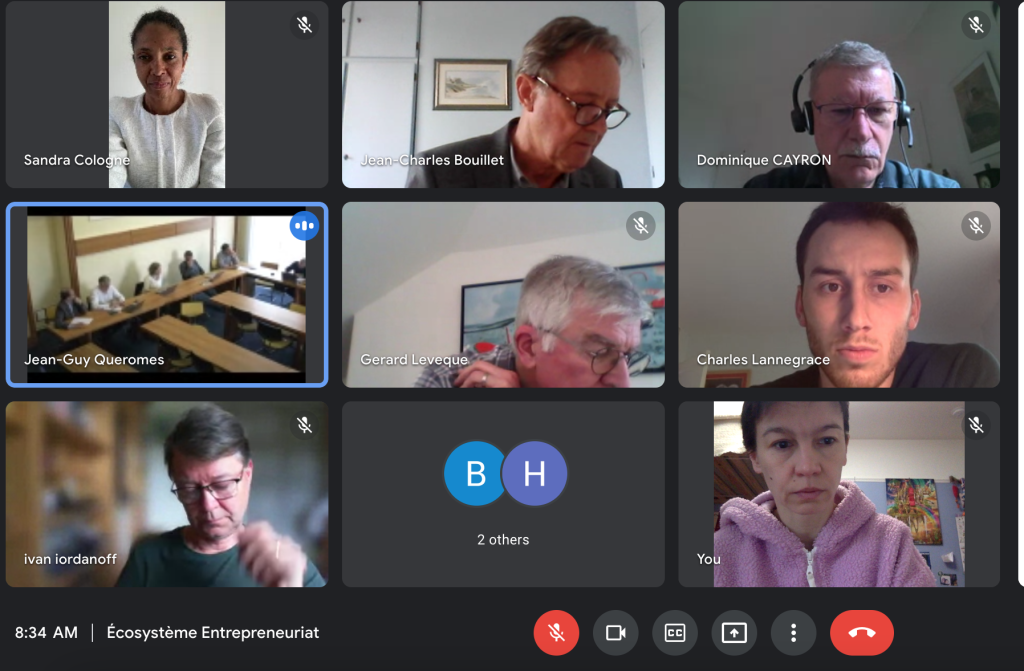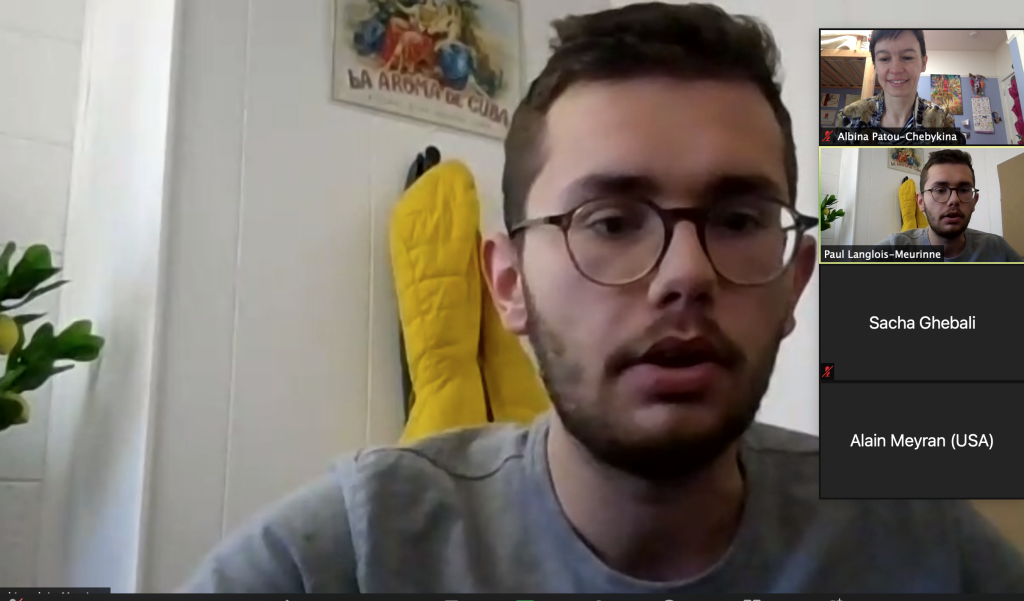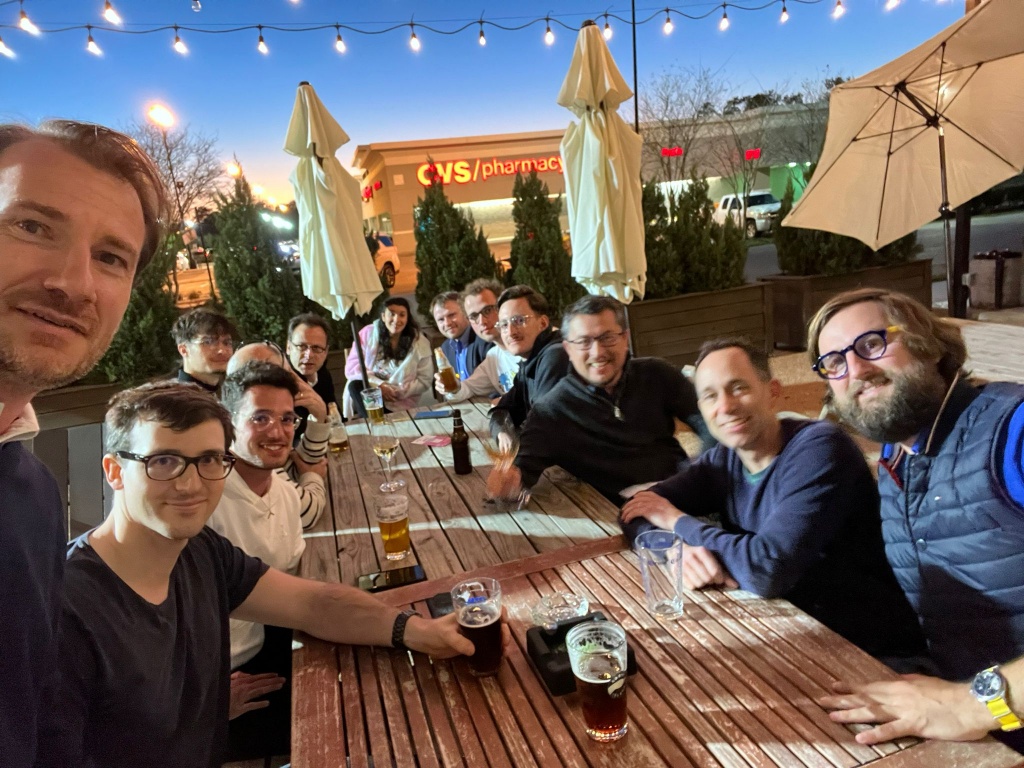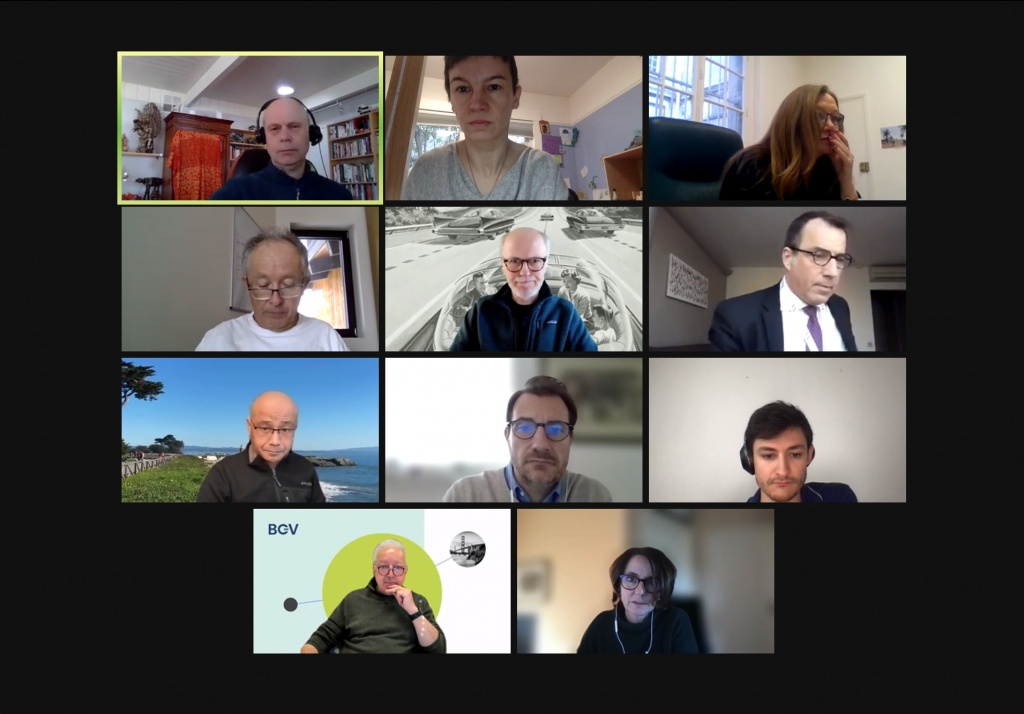- Details
A&M Entrepreneurship ecosystem meetings became regular. Last meeting took place on April 13th and was organized by Jean-Guy Quéromès, VP Formation, SOCE. In this meeting participated:
Sandra Cologne, in charge of Innovation and Entrepreneurship at Arts et Metiers (PEIT); Jean-Chrles Bouilletm President of SIRS Business Angels and Arts et Metiers Acceleration representative; Marie Brandwinder, Director of Arts et Metiers Incubator; Dominique Cayron, REXAM (Reseau Experts Arts et Metiers); Gerard Leveque, Bertrand Cuesta and Hoang la Huy, AMBA; Charles Lannegrace, AMJE president; Ivan Iordanoff, Research and Innovation Director at Arts et Metiers; Albina Patou-Chebykina, AFAM community manager.
The goal of these regular meetings is to inform different participants about initiatives and projects within A&M entrepreneurship network, identify links between different actors of the network, understand how to help each other.
AFAM informed participants about the results of the first months after our new Yosemite program was launched.

- Details
On April 8th AFAM organized an online event to talk about American visas. It is a highly discussed topic and both alumni and students are interested in getting more information about different kind of visas in the US.
While this meeting was not a substitute for legal advice from a qualified attorney, alumni could share their testimonials about obtaining different visas to be able to work and live in the United States.
AFAM would like to thank Sacha Ghebali (Bo 211), Paul Langlois-Meurinne (Ch 218), Mattia Pelissou (Li 216) and Hugo Wagner (Bo 211) who found the time to share their knowledge about obtaining a J1, F1, E2, H1B, O and L visas.
Thank you to all our 20+ participants for questions and comments. Looking forward to seeing you at our next meetings!


Mattia Pelissou (Li 216) and Paul Langlois-Meurinne (Ch 218) during the meeting
- Details
Gadz US energy networking (in person) took place in Houston on March 24th.
The meeting was organized by Patrice Brossard (Bo 195) who is building a network of both Texas and California-based gadz'arts working in the energy sector. 12 gadz'arts joined the gathering. Among them - 4 students of Texas A&M.
We hope that similar meetings might be possible within our California-based gadz'arts energy groupe.
Meanwhile, all SF bay-area based gadz'arts are invited to a social gathering in April. To sign up please visit AFAM's website.

- Details
Every year we have dozens of students in the Shasta program. Some of them just contact us once to get a consultation, some - stay for 6 or more months, find mentors, manage to find internships.
We asked students about their Shasta experience, collected their testimonials and would like to share some of them here with you:
"I would like to thank my mentor for coaching me. His valuable experience of American practices and knowledge of the difference with the French job market allowed me to be more prepared for the interviews I had";
***
"I really appreciated working with my mentor. During several months, she helped me build a strong profile that met American job market standards. She also gave me essential tips and insights of what it is to work in the US as an intern. All along the program, I really felt supported and encouraged, and I will always be grateful for the time she took to help me achieve my goal";
***
"The Mentor was a support and a source of experience that I needed to succeed in finding my internship in the United States. A big thank to my mentor Marc!"
***
I heard about Shasta after a conference made in Paris broadcasted live in the SOCE website. This introduction to the Shasta program motivated me immediately! First contacts with Albina confirmed my motivations and my expectations.
Albina mentored and coached me great to adapt my resume “the American way”. Then we work on my executive summary, essential to catch the recruiter attention. When I get my first interview proposal, Albina gave me some advice and asked me if I needed a mock interview… I also was in contact with my mentor who helped me find good start-ups or companies which could hire me.
***
I am very grateful for all the support that I received from the AFAM for my internship in Georgia. Its implication helped me to better plan my stay in the US and made it perfect! Thank you!
All Arts et Metiers students can join our Shasta program at any time
AFAM is also looking for Shasta mentors, referrers and experts. Please
- Details
On March 7th AFAM board meeting took place. Laurent Champaney, who recently renewed his mandate as President of Arts et Metiers school, participated in this meeting to share his vision of the future of the school.
His project for Arts et Metiers includes several goals:
1) Develop Arts et Metiers identity (around “evolutive learning factories”)
2) Develop environmental and social responsibility
- environmental responsibility: Campus A&M 2030
- Social responsibility: men-women, personal development
- Engagements 2022: Grenoble engagement, auto evaluation label DDRS
3) Train more ( formation continue, formation tout au long de la vie): 3000 alumni/year (+50%), more professors-researchers, more foreign students, more students from business schools, more partnerships, more research activities/exchanges)
4) Better support (international development and entrepreneurship)
International project:
in Europe: German-French Institute for Industry of the future(KIT)
in Africa: campus Morocco
in Asia - Singapore, Malaysia
in the USA - partnership with Texas A&M and ESI
Besides, all board members could hear other reports (CFO, community manager, AFAM committees and regional groups, SOCE and Arts et Metiers Foundation) and discuss current and future activities of AFAM together.
While AFAM board meetings are not open to the public, you can always

At the board meeting: (from left to right) Xavier Wartelle (Li 82), CEO of AFAM; Albina Patou-Chebykina, community manager; Audrey Stewart, Arts et Metiers International Director; Jean-Luc Nauleau (An 81), board member; Marc Amblard (Cl 84), AFAM CFO; Laurent Champaney, Arts et Metiers president; Yarith Phay (Bo 91), AFAM Secretary; Patrice Brossard (Bo 95), AFAM board member and DG Amériques; Louis Renaux (Cl 216), AFAM board member; Eric Benhamou (Ai 72), AFAM President Emeritus and AFAM board member; Valerie Prulhière (Li 87), VP International, SOCE and other board members during the meeting
- AFAM participated in International Week organized by Arts et Metiers
- Zoom on: Meng and Advanced Manufacturing and Design, MIT - Antoine Yazbeck (Ch 217), Arts et Metiers & MIT alumnus
- Easy Mondays with Basma Aiouche (Cl 214) - Advice #4
- Interview with Christophe Normand (Cl193): interns, J1 visa and more
- Easy Mondays with Basma Aiouche (Cl 214) - Advice #3

 BLOG /
BLOG /  CALENDAR /
CALENDAR /  DONATIONS /
DONATIONS /  MENTORS /
MENTORS /